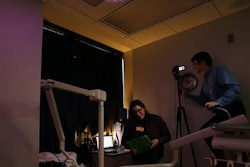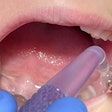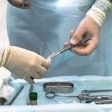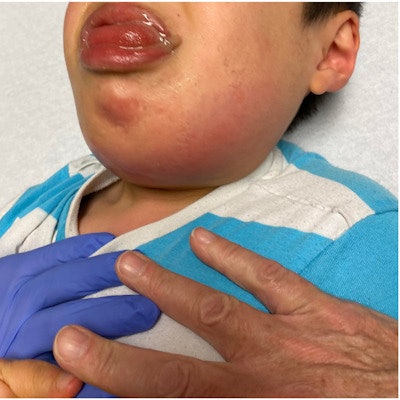
A 6-year-old boy with autism experienced life-threatening throat swelling and airway compromise following a submandibular gland ligation procedure to control his drooling, according to a short communication published April 18 in Advances in Oral and Maxillofacial Surgery.
The boy was hospitalized for weeks and had to undergo an emergency tracheostomy secondary to infection in his remnant left submandibular duct. While submandibular gland ligation is promoted as a simple procedure with low morbidity risks, the authors published the report to highlight the near-catastrophic complications that patients can experience after a ligation procedure.
"[With this case], we reflect on efficacy of surgical management in sialorrhea, and reevaluate procedural morbidity," wrote the authors, led by Dr. Imogen Scott, a maxillofacial registrar and senior dental officer at the Auckland District Health Board in New Zealand.
6-year-old with swelling, tongue protrusion
A 6-year-old boy with nonverbal autism and severe developmental delays was taken to a hospital emergency department due to rapid onset tongue protrusion and visible submandibular swelling. The boy had no fever or trouble breathing, but he was agitated and had trouble complying and settling. The boy's tongue was not retractable, and doctors were unable to visualize his oropharynx, the authors wrote.
Three months earlier, the boy underwent a bilateral submandibular gland ligation to manage his excessive salivation. Prior submandibular and parotid injections of botulinum toxin had failed to improve his drooling.
Oral and maxillofacial surgeons at the hospital suspected the swelling and protruding tongue were due to an odontogenic infection. However, the boy's distress and behavioral challenges prevented clinicians from performing imaging, blood testing, and oxygen saturation monitoring.
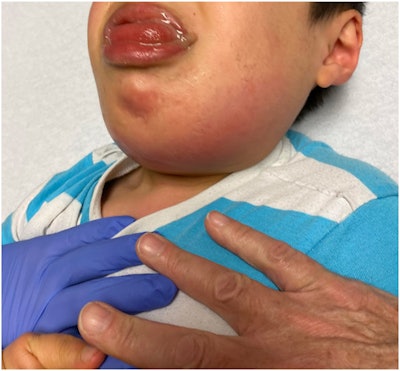 A 6-year-old diagnosed with nonverbal autism experienced rapid onset tongue protrusion and swelling following submandibular gland ligation. Image courtesy of Scott et al. Licensed CC BY 4.0.
A 6-year-old diagnosed with nonverbal autism experienced rapid onset tongue protrusion and swelling following submandibular gland ligation. Image courtesy of Scott et al. Licensed CC BY 4.0.Since the boy's airway was threatened, he was taken to the operating room without a clear diagnosis, the authors wrote. After multiple nasotracheal and orotracheal intubation techniques failed, the anesthetist requested front-of-neck access and performed an emergency tracheostomy.
The surgeons performed extraoral and intraoral exploration. Copious amounts of pus emptied from the boy's left submandibular duct upon incision. Clinicians washed out the area and placed a drain but found no odontogenic source of infection, they wrote.
After the surgery, the boy required postoperative care in the intensive care unit. A computed tomography scan showed swelling of the left base of the boy's tongue, palatine tonsil, and bilateral submandibular glands. However, the scan showed no drainable collection, the authors wrote.
A swab taken from the floor of the child's mouth showed neutrophils, Gram-positive bacteria, and Gram-negative bacteria. For nine days, the boy was intubated and given a host of medications, including antibiotics, steroids, muscle relaxers, and sedatives, according to the communication.
Over the following three weeks, the patient was transferred to a pediatric hospital, where he underwent several invasive procedures investigating potential complications of the emergency tracheostomy, the authors wrote.
Need for careful case selection
Chronic drooling, or sialorrhea, is common for individuals with neuromuscular and developmental disorders, like the boy described in the communication. It increases stigmatization, risk of perioral skin infections, and aspiration pneumonia, the authors wrote.
When behavioral and conservative surgeries cannot correct sialorrhea, clinicians can pursue more advanced options, including submandibular duct relocation and salivary duct ligation. Such procedures are promoted as short, simple, with a low morbidity risk, the authors wrote.
Documented complications include prolonged submandibular/preauricular swelling, palsy, paraesthesia, sialorrhea recurrence, and delayed reinitiation of oral feeding. However, the researchers wrote that life-threatening oropharyngeal swelling and airway compromise aren't reported.
"Its renowned low morbidity must be reconsidered in the context of this case," they wrote.
If clinicians are considering a submandibular salivary ligation for a patient, they should be cautious and recognize it carries a risk of catastrophic airway compromise with a demanding, intensive recovery, the authors wrote.
"The authors question the efficacy of submandibular duct ligation, recommend careful case selection for submandibular duct ligation procedures recognising the procedure carries risk of catastrophic airway compromise with demanding and resource-intensive recovery," Scott and colleagues concluded.




